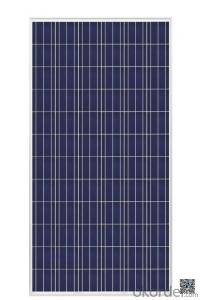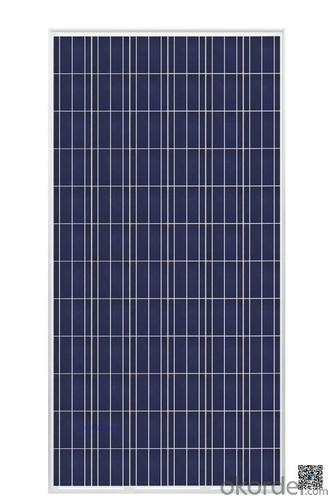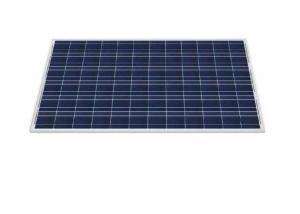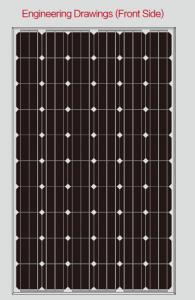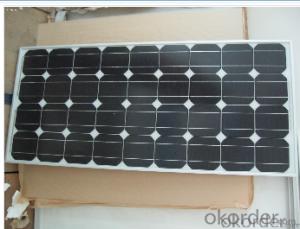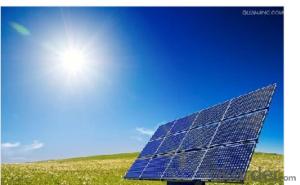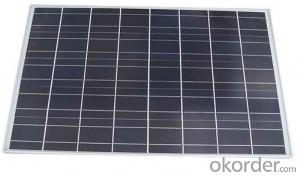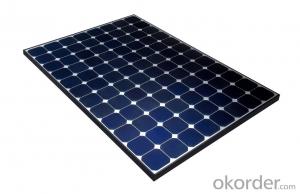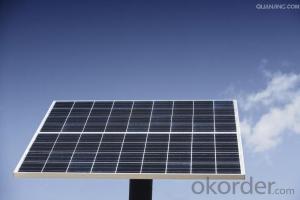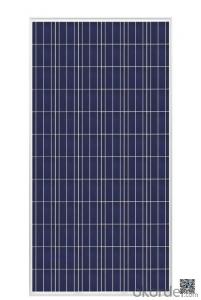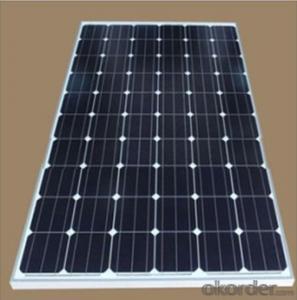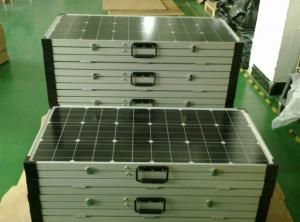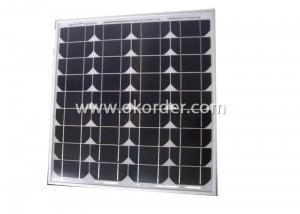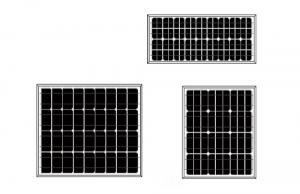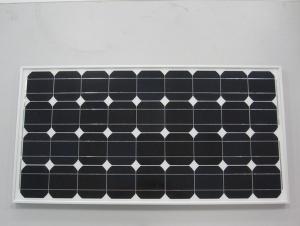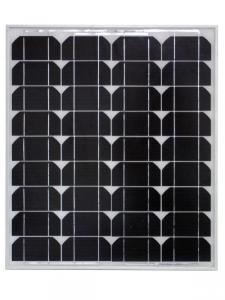Factory Solar Panels - Solar Panel Poly, Solar Module in China
- Loading Port:
- Shanghai
- Payment Terms:
- TT OR LC
- Min Order Qty:
- 2600 watt
- Supply Capability:
- 26000 watt/month
OKorder Service Pledge
OKorder Financial Service
You Might Also Like
Specification
We now provide
• Monocrystalline Solar Panel
• Polycrystalline Solar Panel( multicrystalline silicon Solar Panel)
Features of our products:
• High conversion efficiency mono/poly-crystalline amorphous silicon solar cells
• Modules incorporate high performance bypass diodes to minimize the power drop caused by shading
• High transmittance, low-iron tempered glass
• High performance EVA encapsulant to prevent destroying and water.
• AI frame: without screw, corner connection. 8 holes on the frame can be installed easily
• Good performance of preventing from atrocious weather such as wind and hails
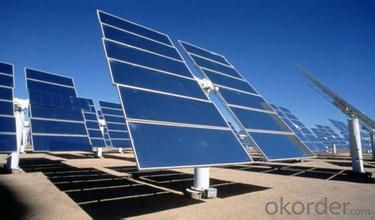
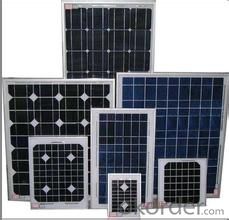
Polycrystalline Silicon Solar Modules 48Cell-195W Specification
ELECTRICAL PERFORMANCE | |||
Power output | P max | W | 195 |
Power output tolerances | ΔP max | W | 0/+5 |
Module effi ciency | η m | % | 14.7 |
Voltage at Pmax | V mpp | V | 23.7 |
Current at Pmax | I mpp | A | 8.03 |
Open-circuit voltage | V oc | V | 30.1 |
Short-circuit current | I sc | A | 8.65 |
Product Description:
This installation Manual contains essential information for the electrical and mechanical installation that your must know before installing CUSTOMER PV modules. This also contains safety information you need to be familiar with .All the information described in this manual are the intellectual property of CNBM and based on the technologies and experiences that have been acquired and accumulated in the long history of CUSTOMER. This document does not constitute a warranty, expressed or implied.
CUSTOMER does not assume responsibility and expressly disclaims liability for loss, damage, or expense arising out of in anyway connected with installation, operation, use or maintenance of the PV modules. No responsibility is assumed by CUSTOMER for any infringement of patents or other rights of third parties that may result from use of PV module.
CUSTOMER reserves the right to make changes to the product, specifications or installation manual without prior notice.
Solar panel working process
In addition to being the ultimate source of all life on earth, the sun is an infinitely renewable, completely pollution-free source of electricity. Instead of burning fossil fuels dug up from the ground in a big power plant – a very 19th century, industrial age approach, when you think about it – solar panels convert sunlight directly into electricity, with no harmful emissions.
The basic unit of a solar panel is a solar cell, which usually consists of one or two layers of silicon-based semiconductor wafers. When struck by the photons in sunlight, the solar cell generates an electrical charge due to the "photovoltaic effect" – which is a pretty good name, since it produces voltage from photons. The flow of these electrons moves in a steady electrical current from one side of the cell to the other.
Dozens of these PV cells are packaged together into solar modules, which in turn are packaged into solar panels that are mounted on a rooftop and arranged to maximize their hours of exposure to direct sunlight. Because the electricity generated by all those solar cells is direct current (DC), it is then sent to an inverter that transforms the power into the same alternating current (AC) used by the appliances in your home and the local utility electricity distribution grid. Increasingly, these inverters are getting "smart," providing data monitoring for solar installation performance and other grid integration services.
- Q: How do solar panels affect the overall energy security of a building?
- Solar panels can greatly enhance the overall energy security of a building. By harnessing the sun's energy, solar panels provide a reliable and sustainable source of electricity. This reduces a building's dependence on traditional energy sources, such as fossil fuels, which are finite and subject to price volatility or supply disruptions. Solar panels also contribute to grid resilience, as they can continue generating power even during power outages. Consequently, incorporating solar panels into a building's energy mix can enhance its energy security by diversifying its energy sources and promoting self-sufficiency.
- Q: can this amount of solar charge these batteries.
- The solar panels are sufficient to charge the batteries. Your location is important as it relates to home many kWh/m2/day solar energy you receive. Check your actual solar power output using a current and volt meter, confirm you use at least a 3 stage battery charger. The total charged voltage should be about 2.7 volts. Check each cells voltage to see if one has failed.
- Q: Can solar panels be installed on a factory or industrial facility?
- Yes, solar panels can be installed on a factory or industrial facility. In fact, many factories and industrial facilities are increasingly adopting solar power as a sustainable and cost-effective energy solution. By installing solar panels, these facilities can reduce their reliance on traditional electricity sources, lower their carbon footprint, and potentially save on energy costs in the long run.
- Q: Can solar panels be installed on airports?
- Yes, solar panels can be installed on airports. In fact, many airports around the world have already embraced solar energy to meet their power needs and reduce their carbon footprint. These panels are typically installed on rooftops, parking structures, or vacant land within the airport premises. The use of solar panels in airports not only helps generate clean and renewable energy but also contributes to cost savings and long-term sustainability.
- Q: Can solar panels be installed in areas with high wind speeds?
- Yes, solar panels can be installed in areas with high wind speeds. However, it is important to ensure that the solar panels are designed and installed to withstand the specific wind conditions of the area. This may involve using appropriate mounting systems and anchoring techniques to secure the panels effectively. Additionally, regular maintenance and inspections should be conducted to ensure the panels remain secure and efficient in such conditions.
- Q: Can solar panels be installed on a shaded area?
- Solar panels can still be installed in shaded areas, but they may not be as effective in generating electricity compared to panels installed in direct sunlight. The amount of shade and duration of shading throughout the day will impact the overall energy output of the solar panels.
- Q: Can solar panels be installed on a pole or ground mount?
- Yes, solar panels can be installed on either a pole or a ground mount. Pole mounts are typically used in situations where there is limited space or if the panels need to be elevated for better sun exposure. Ground mounts, on the other hand, are more commonly used in larger installations where ample space is available. Both options provide flexible solutions for installing solar panels.
- Q: What, if any, improvement in efficiency per square foot or meter is realized by a solar panel in space vs. being mounted on the ground where the light is attenuated by the atmosphere?In passing, I found a site that gives an output of .89 watts / 4 in. sq for a particular home-mounted panel.
- The mirrors might could desire to be on computerized monitoring gadgets so as that using fact the sunlight strikes it might keep the pondered sunlight on the panel with value of optical sensors and stepper automobiles and %s or laptop controllers then you definitely've the mirrors which destroy in hailstorms except you employ chrome metallic ones that in the process basic terms mirror 60% in assessment to 80% for glass To tutor what I say take a small hand mirror outdoors and prop it up so it reflects at one brick or spot on wall mark it or keep in mind it then wait or come lower back in 20 min see what proportion times it may be moved and how complicated the development of circulate
- Q: What is the working principle of solar panels?
- the material is easy to industrial production and material performance and stability.
- Q: How do solar panels affect my electricity bill?
- Solar panels can significantly reduce your electricity bill by producing clean and renewable energy from the sun. By generating your own electricity, you can offset the amount of power you need to purchase from the grid, resulting in lower monthly bills. Additionally, if your solar panels generate more electricity than you consume, you may even receive credits or payments from your utility company.
Send your message to us
Factory Solar Panels - Solar Panel Poly, Solar Module in China
- Loading Port:
- Shanghai
- Payment Terms:
- TT OR LC
- Min Order Qty:
- 2600 watt
- Supply Capability:
- 26000 watt/month
OKorder Service Pledge
OKorder Financial Service
Similar products
Hot products
Hot Searches
Related keywords
